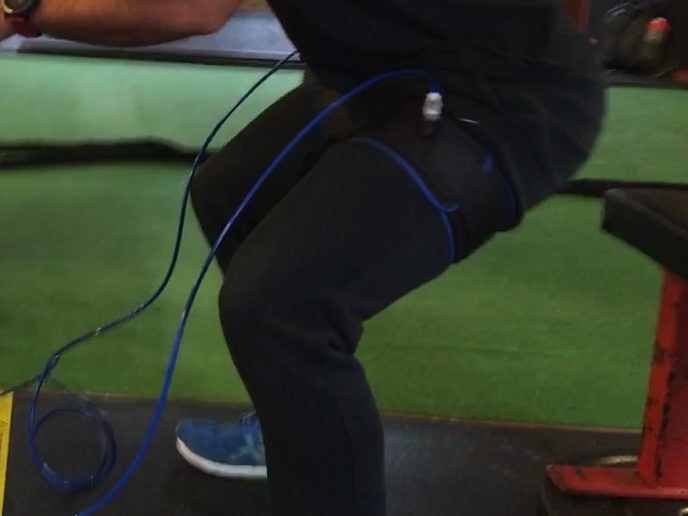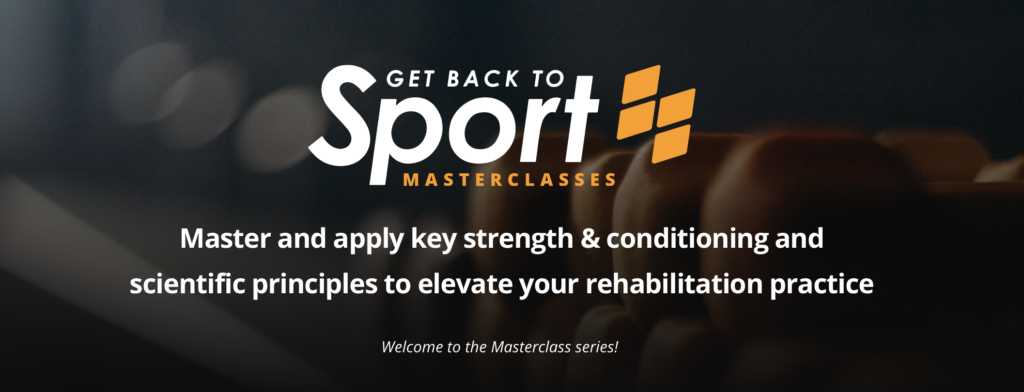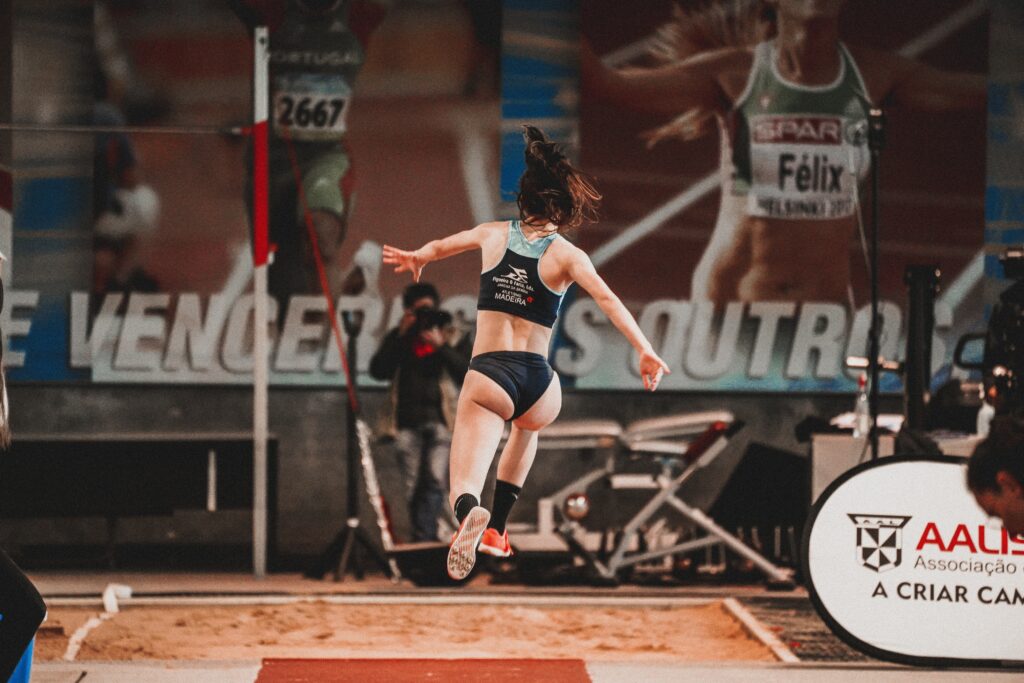Hi there and welcome to post 54 of Strength & Conditioning For Therapists and the first in this sub-series of Adjuncts To Rehabilitation. Firstly, thanks to all of you who responded to my e-mail with suggestions of what to cover. There were lots of suggestions for things like blood flow restriction and electrical stimulation and then some more left-field suggestions and ideas including “neuropriming programmes” that ‘intervene directly on the motor cortex to make it hyperplastic‘ Interesting. Today we’re going to kick off the series with: Blood flow restriction (BFR) training. Next week we’ll delve more into the evidence base of BFR and importantly its application to rehab specifically. Enjoy.
Blood Flow Restriction Training: What is it?
I’m guessing that you’ve heard of blood flow restriction (BFR) training, or indeed perhaps you use it with your own patients? It’s not a new idea. Its origin dates back to the 1970s in Japan, developed by Dr Yoshiaki Sato and commonly referred to as Kaatsu training.
The basic methodology is to reduce arterial blood flow to, and prevent the venous return from the exercising muscles by means of a tourniquet. Typically these tourniquets, or ‘pressure cuffs’ are placed on the proximal region of the exercised limb and are inflated to exert mechanical compression of the vasculature underneath. With the right pressure this will restrict the blood flow to the musculature distal to the cuff and limit (or prevent) the venous return. This creates a hypoxic environment in the exercising muscle and potentially a pooling of blood within the capillaries.
Why Use Blood Flow Restriction?
If you’re not familiar with BFR, you might be asking why the hell do we want to do this? It sounds pretty barbaric, and potentially dangerous, no? Well, the real advantage of BFR is that you can induce significant strength – and hypertrophic – gains using very low load, in fact as little as 20-30% of 1RM. And this research has a significant back-catalogue; studies time and time again demonstrate its potential efficacy (with appropriate methodology). Furthermore you can pretty much avoid the exericse-induced muscle damage response too, so no DOMS!
It might not be as effective as true high load strength training in all populations (Hughes, et al. 2017) but compared to low load without BFR, significantly greater strength gains can be made with occlusion. I know what you’re thinking. Clearly this has its appeal in a clinical environment whereby performing high load resistance training might not be advocated or indeed possible due to symptoms. But more on that later.
How to Use Blood Flow Restriction
So, what do you actually do? Can you just make your own tourniquet and tighten it to your comfort? This is an interesting question actually. Whilst we might laugh at the bodybuilders in the gym doing just this, there might be something in it. Specifically, recent research is questioning whether or not the effects are any different.
Frietas et al (2020) compared the effects of traditional BFR with Doppler-assisted occlusion pressures to a pragmatic design whereby an elastic wrap was tightened until the participant reported an occlusion pressure of 7 out of 10. This wasn’t a training study, but the authors reported the acute responses to resistance exercise between conditions.
No significant differences in acute responses, such as whole body lactate, muscle swelling, plasma volume were observed between the two methods of BFR following exercise and there were no differences in EMG (surface electromyographic activity) values during the exercise too. The latter suggesting the extent of muscle activation was similar between measured and pragmatic BFR. This is interesting. More research to do I think and maybe we stick to the more measured approach for now, especially with patients.
Furthermore, it has been posited that it’s important to maintain the standard pressure throughout exercise; you can imagine things slacken as the musculature expands and contracts. Although the Doppler method enabled an accurate calculation of the initial cuff pressure, it didn’t provide an ongoing maintenance check, thus its conceivable that the 2 methods offered a similar pressures over time.
Does Pressure Matter?

Yes it probably does, with respect to occlusion. The amount of pressure you need to occlude blood flow will depend on things like tourniquet size, limb size, a person’s blood pressure, and the load lifted. Research shows that the cuff width is important, with wider cuffs (e.g. 5-13cm) providing more surface area over which to occlude flow and requiring less pressure to achieve this by comparison to thin bands (Loenneke et al. 2012), which might risk localised tissue damage. So maybe the elastic tubes and cords used by some bodybuilders isn’t such a good idea!
Studies typically use pressures that elicit between 30-80% of arterial occlusion pressure (AOP), i.e. cuff pressures that occlude the arterial blood flow by 30-80% and which simultaneously occlude venus flow. This can be calculated by using a Doppler, as in the above study.
For the leg, the Doppler is placed on the posterior tibial artery , the cuff is placed on the proximal part of the thigh and is inflated to the point where the pulse can no longer be detected. The cuff pressure at which this occurs is 100% AOP. This is checked a few times and a percentage of AOP can be calculated (e.g., 40–80% of AOP) to use during exercise.
More recently the development of ‘smart cuffs’ enable the automation of these processes within the cuff and controlled by the computer system. This also enables the maintenance of the required pressure throughout the exercise.
How Much Load?
The most often cited protocol for BFR is reps per set of: 30, 15, 15 ,15 of around 20-40% of an individual’s 1RM. So in total 75 reps over 4 sets, with a relatively short inter-set rest period (30-60s). Here’s where we come back to pressure. Higher pressures are typically used with lower contraction intensities, for example a protocol of 30, 15, 15 ,15 at 30% 1RM is usually associated with a AOP of 50-80% (Freitas et al, 2020; Patterson et al 2019). But as with any novel training, you probably want to grade the exposure.
For higher loads (e.g. 8-10RM), we’re not so sure, the efficacy is still being investigated in the literature, but it appears as though this is being progressed practically in sport and rehab, and the AOP is adjusted towards the lower end of the spectrum.
Why Does It Work?
So there’s no real crystal clear answer why blood flow restriction training works. There are several proposed mechanisms, which theoretically could account for the superior increases in strength and hypertrophy observed following BRF training vs training at the same intensity without occlusion. Some of which include:
- Occlusion creates a hypoxic environment – no oxygen for aerobic glycolysis and thus promotes an increased recruitment of fast twitch muscle fibres
- The accumulation of metabolites, or increased metabolic stress – influences anabolic hormone response
- Hyperaemia post cuff removal, cell swelling and greater reperfusion
Plus other things too. There isn’t really a solid answer to the question and the degree to which any one of these potential mechanisms contributes to strength and hypertrophic gain following BFR training will likely vary according to the protocol.
So What do We Think?
Although we haven’t covered the evidence base in any real detail here (that’s next week), in my opinion, BFR is a good and very useful adjunct to rehabilitation, especially where traditionally heavy strength training loads aren’t advocated or induce a pain response. And I say rehabilitation, not standard conditioning in healthy people here because what you miss out on with the heavy loading is the positive effects on other tissues like tendon and bone. Furthermore, avoidance of a muscle damage response means that the musculature doesn’t adapt in the same way and thus isn’t as robust or capable of performing at longer muscle lengths.https://getbacktosport.com/online-courses/masterclasses/
Want to learn more about S&C topics to advance you training and rehabilitation?
References



